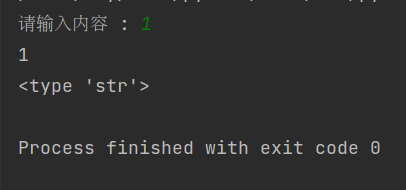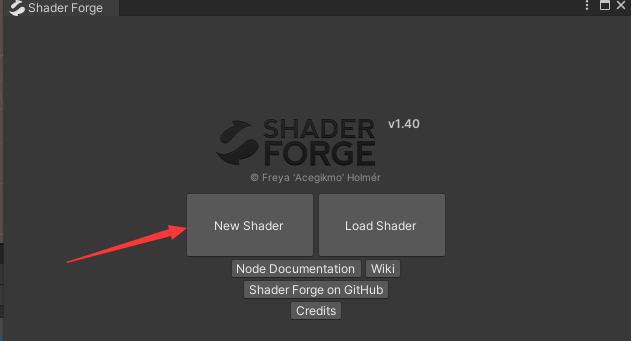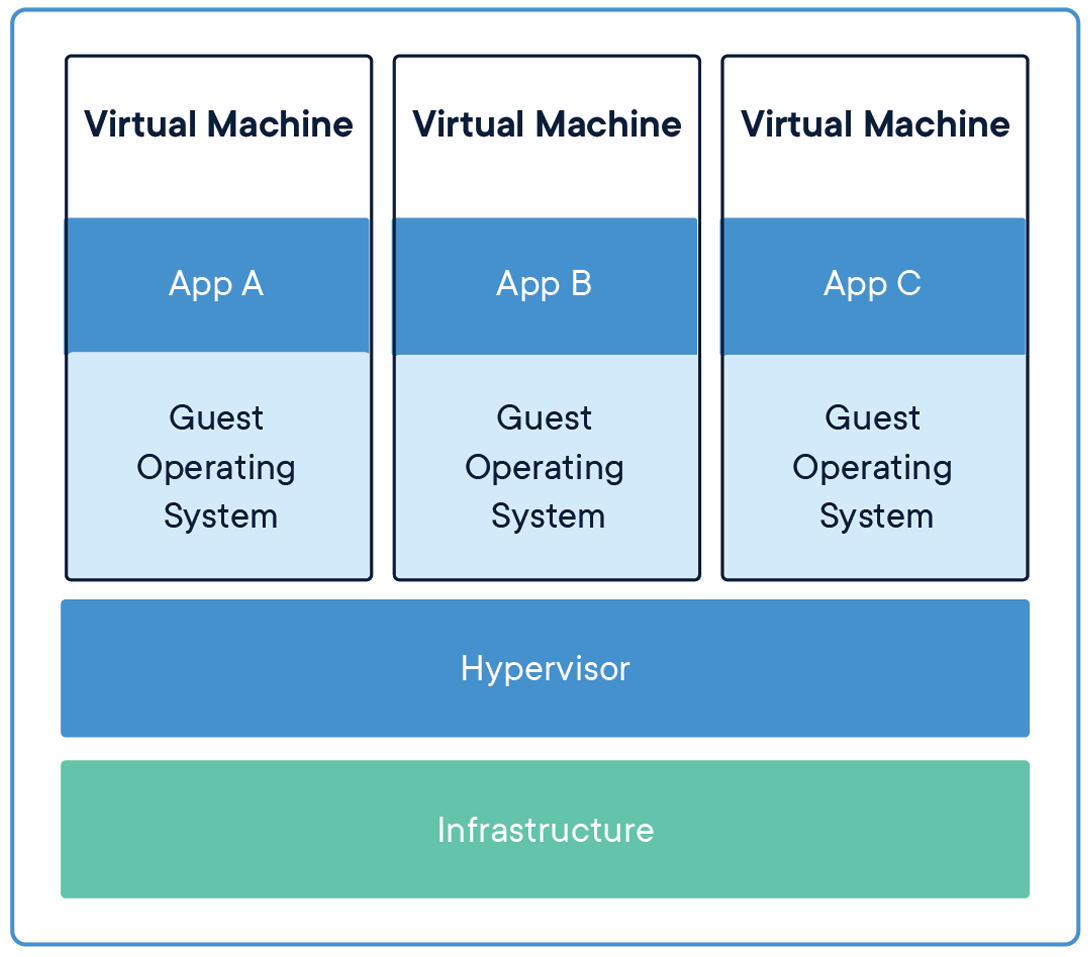【源码分析】@Configuration源码分析2
@Configuration源码分析1
@Configuration源码分析2
使用版本:5.3.22
1.注册ConfigurationClassPostProcessor流程源码解析
下面开始搞@Configuration注解涉及到的ConfigurationClassPostProcessor核心类的注册流程的源码执行过程。
1.启动类ConfigurationDemo的main()方法
在main()方法中会调用AnnotationConfigApplicationContext类的构造方法传入配置类ConfigurationAnnotationConfig的Class对象来创建IOC容器。
public static void main(String[] args) {AnnotationConfigApplicationContext context = new AnnotationConfigApplicationContext(ConfigurationAnnotationConfig.class);}
2.解析AnnotationConfigApplicationContext类的AnnotationConfigApplicationContext(Class<?>… componentClasses)构造方法
public AnnotationConfigApplicationContext(Class<?>... componentClasses) {this();register(componentClasses);refresh();}
在上述构造方法中,会通过this()调用AnnotationConfigApplicationContext类的无参构造方法。
3.解析AnnotationConfigApplicationContext类的AnnotationConfigApplicationContext()无参构造方法
public AnnotationConfigApplicationContext() {StartupStep createAnnotatedBeanDefReader = this.getApplicationStartup().start("spring.context.annotated-bean-reader.create");//表示注解类型的Bean定义信息读取器,主要就是读取通过注解方式进行实例化的Bean的定义信息。this.reader = new AnnotatedBeanDefinitionReader(this);createAnnotatedBeanDefReader.end();//表示类路径下的Bean定义扫描器,主要就是扫描类路径下的Bean定义信息。this.scanner = new ClassPathBeanDefinitionScanner(this);}
在AnnotationConfigApplicationContext类的无参构造方法中,主要的逻辑就是实例化了AnnotatedBeanDefinitionReader类型的reader成员变量和ClassPathBeanDefinitionScanner类型的scanner成员变量。
@Configuration注解涉及到的注册流程源码的执行过程,会执行实例化reader成员变量的代码.
this.scanner = new ClassPathBeanDefinitionScanner(this);
下面在调用:
public AnnotatedBeanDefinitionReader(BeanDefinitionRegistry registry) {this(registry, getOrCreateEnvironment(registry));}
在上述构造方法中,通过this调用了AnnotatedBeanDefinitionReader类的AnnotatedBeanDefinitionReader(BeanDefinitionRegistry registry, Environment environment)构造方法。
4.解析 AnnotatedBeanDefinitionReader#AnnotatedBeanDefinitionReader
public AnnotatedBeanDefinitionReader(BeanDefinitionRegistry registry, Environment environment) {Assert.notNull(registry, "BeanDefinitionRegistry must not be null");Assert.notNull(environment, "Environment must not be null");this.registry = registry;this.conditionEvaluator = new ConditionEvaluator(registry, environment, null);AnnotationConfigUtils.registerAnnotationConfigProcessors(this.registry);}
在上述构造方法中,最核心的逻辑就是调用了AnnotationConfigUtils工具类的registerAnnotationConfigProcessors()方法,将BeanDefinitionRegistry类型的registry对象传入方法中。
registry对象本质上就是一个AnnotationConfigApplicationContext类对象的实例,这是因为AnnotationConfigApplicationContext类继承了GenericApplicationContext类,而GenericApplicationContext类实现了BeanDefinitionRegistry接口。
如下:
public class AnnotationConfigApplicationContext extends GenericApplicationContext {}public class GenericApplicationContext extends AbstractApplicationContext implements BeanDefinitionRegistry {}
5.解析AnnotationConfigUtils# registerAnnotationConfigProcessors
public static void registerAnnotationConfigProcessors(BeanDefinitionRegistry registry) {registerAnnotationConfigProcessors(registry, null);}
在AnnotationConfigUtils类的registerAnnotationConfigProcessors(BeanDefinitionRegistry registry)方法中调用了AnnotationConfigUtils类中的另外一个registerAnnotationConfigProcessors()方法。
再往下看 registerAnnotationConfigProcessors()方法
此方法主要是将@Configuration注解涉及到的ConfigurationClassPostProcessor类的Bean定义信息注册到IOC容器中的核心代码。
public static Set<BeanDefinitionHolder> registerAnnotationConfigProcessors(BeanDefinitionRegistry registry, @Nullable Object source) {DefaultListableBeanFactory beanFactory = unwrapDefaultListableBeanFactory(registry);if (beanFactory != null) {if (!(beanFactory.getDependencyComparator() instanceof AnnotationAwareOrderComparator)) {beanFactory.setDependencyComparator(AnnotationAwareOrderComparator.INSTANCE);}if (!(beanFactory.getAutowireCandidateResolver() instanceof ContextAnnotationAutowireCandidateResolver)) {beanFactory.setAutowireCandidateResolver(new ContextAnnotationAutowireCandidateResolver());}}Set<BeanDefinitionHolder> beanDefs = new LinkedHashSet<>(8);// 会调用registerPostProcessor()方法注册后置处理器。if (!registry.containsBeanDefinition(CONFIGURATION_ANNOTATION_PROCESSOR_BEAN_NAME)) {RootBeanDefinition def = new RootBeanDefinition(ConfigurationClassPostProcessor.class);def.setSource(source);beanDefs.add(registerPostProcessor(registry, def, CONFIGURATION_ANNOTATION_PROCESSOR_BEAN_NAME));}if (!registry.containsBeanDefinition(AUTOWIRED_ANNOTATION_PROCESSOR_BEAN_NAME)) {RootBeanDefinition def = new RootBeanDefinition(AutowiredAnnotationBeanPostProcessor.class);def.setSource(source);beanDefs.add(registerPostProcessor(registry, def, AUTOWIRED_ANNOTATION_PROCESSOR_BEAN_NAME));}// Check for JSR-250 support, and if present add the CommonAnnotationBeanPostProcessor.if (jsr250Present && !registry.containsBeanDefinition(COMMON_ANNOTATION_PROCESSOR_BEAN_NAME)) {RootBeanDefinition def = new RootBeanDefinition(CommonAnnotationBeanPostProcessor.class);def.setSource(source);beanDefs.add(registerPostProcessor(registry, def, COMMON_ANNOTATION_PROCESSOR_BEAN_NAME));}// Check for JPA support, and if present add the PersistenceAnnotationBeanPostProcessor.if (jpaPresent && !registry.containsBeanDefinition(PERSISTENCE_ANNOTATION_PROCESSOR_BEAN_NAME)) {RootBeanDefinition def = new RootBeanDefinition();try {def.setBeanClass(ClassUtils.forName(PERSISTENCE_ANNOTATION_PROCESSOR_CLASS_NAME,AnnotationConfigUtils.class.getClassLoader()));}catch (ClassNotFoundException ex) {throw new IllegalStateException("Cannot load optional framework class: " + PERSISTENCE_ANNOTATION_PROCESSOR_CLASS_NAME, ex);}def.setSource(source);beanDefs.add(registerPostProcessor(registry, def, PERSISTENCE_ANNOTATION_PROCESSOR_BEAN_NAME));}if (!registry.containsBeanDefinition(EVENT_LISTENER_PROCESSOR_BEAN_NAME)) {RootBeanDefinition def = new RootBeanDefinition(EventListenerMethodProcessor.class);def.setSource(source);beanDefs.add(registerPostProcessor(registry, def, EVENT_LISTENER_PROCESSOR_BEAN_NAME));}if (!registry.containsBeanDefinition(EVENT_LISTENER_FACTORY_BEAN_NAME)) {RootBeanDefinition def = new RootBeanDefinition(DefaultEventListenerFactory.class);def.setSource(source);beanDefs.add(registerPostProcessor(registry, def, EVENT_LISTENER_FACTORY_BEAN_NAME));}return beanDefs;}
这里会调用registerPostProcessor()方法注册后置处理器。
// 会调用registerPostProcessor()方法注册后置处理器。if (!registry.containsBeanDefinition(CONFIGURATION_ANNOTATION_PROCESSOR_BEAN_NAME)) {RootBeanDefinition def = new RootBeanDefinition(ConfigurationClassPostProcessor.class);def.setSource(source);beanDefs.add(registerPostProcessor(registry, def, CONFIGURATION_ANNOTATION_PROCESSOR_BEAN_NAME));}
6.解析registerPostProcessor方法
private static BeanDefinitionHolder registerPostProcessor(BeanDefinitionRegistry registry, RootBeanDefinition definition, String beanName) {definition.setRole(BeanDefinition.ROLE_INFRASTRUCTURE);registry.registerBeanDefinition(beanName, definition);return new BeanDefinitionHolder(definition, beanName);}
代码主要是,调用了registry参数的registerBeanDefinition()方法来注册ConfigurationClassPostProcessor类的Bean定义信息,definition参数本质上就是一个AnnotationConfigApplicationContext类的实例对象。
最终会调用DefaultListableBeanFactory类的registerBeanDefinition()方法来注册ConfigurationClassPostProcessor类的Bean定义信息。
7.解析DefaultListableBeanFactory#registerBeanDefinition方法
@Overridepublic void registerBeanDefinition(String beanName, BeanDefinition beanDefinition)throws BeanDefinitionStoreException {this.beanDefinitionMap.put(beanName, beanDefinition);}
主要看这一行代码,Spring的IOC容器中注册类的Bean定义信息,其实就是向beanDefinitionMap对象中添加元素,beanDefinitionMap对象本质上是一个ConcurrentHashMap对象。向beanDefinitionMap对象中添加的元素的Key为Bean的名称,Value为Bean的定义信息。
private final Map<String, BeanDefinition> beanDefinitionMap = new ConcurrentHashMap<>(256);
到这@Configuration注解涉及到的ConfigurationClassPostProcessor类的注册过程分析完成了,可以多看几遍理解就好,记住谁也记不住。
2.注册ConfigurationAnnotationConfig 源码解析
启动Spring IOC容器时,向IOC容器中注册ConfigurationAnnotationConfig类的Bean定义信息的源码。
1.启动类ConfigurationDemo的main()方法
在main()方法中会调用AnnotationConfigApplicationContext类的构造方法传入配置类ConfigurationAnnotationConfig的Class对象来创建IOC容器。
public static void main(String[] args) {AnnotationConfigApplicationContext context = new AnnotationConfigApplicationContext(ConfigurationAnnotationConfig.class);}
2.解析AnnotationConfigApplicationContext类的AnnotationConfigApplicationContext(Class<?>… componentClasses)构造方法
public AnnotationConfigApplicationContext(Class<?>... componentClasses) {this();register(componentClasses);refresh();}
在register(Class<?>… componentClasses)方法中调用了reader的register()方法。
@Overridepublic void register(Class<?>... componentClasses) {Assert.notEmpty(componentClasses, "At least one component class must be specified");StartupStep registerComponentClass = this.getApplicationStartup().start("spring.context.component-classes.register").tag("classes", () -> Arrays.toString(componentClasses));this.reader.register(componentClasses);registerComponentClass.end();}
3.解析AnnotatedBeanDefinitionReader # register
public void register(Class<?>... componentClasses) {for (Class<?> componentClass : componentClasses) {registerBean(componentClass);}}
循环遍历传入的可变参数componentClasses,每次循环时,都会调用registerBean()方法。
4.解析AnnotatedBeanDefinitionReader# doRegisterBean
public void registerBean(Class<?> beanClass) {doRegisterBean(beanClass, null, null, null, null);}
主要部分会用注释备注:
// 从给定的bean类注册bean,从类声明的注释派生其元数据。private <T> void doRegisterBean(Class<T> beanClass, @Nullable String name,@Nullable Class<? extends Annotation>[] qualifiers, @Nullable Supplier<T> supplier,@Nullable BeanDefinitionCustomizer[] customizers) {AnnotatedGenericBeanDefinition abd = new AnnotatedGenericBeanDefinition(beanClass);if (this.conditionEvaluator.shouldSkip(abd.getMetadata())) {return;}abd.setInstanceSupplier(supplier);ScopeMetadata scopeMetadata = this.scopeMetadataResolver.resolveScopeMetadata(abd);abd.setScope(scopeMetadata.getScopeName());String beanName = (name != null ? name : this.beanNameGenerator.generateBeanName(abd, this.registry));AnnotationConfigUtils.processCommonDefinitionAnnotations(abd);if (qualifiers != null) {for (Class<? extends Annotation> qualifier : qualifiers) {if (Primary.class == qualifier) {abd.setPrimary(true);}else if (Lazy.class == qualifier) {abd.setLazyInit(true);}else {abd.addQualifier(new AutowireCandidateQualifier(qualifier));}}}if (customizers != null) {for (BeanDefinitionCustomizer customizer : customizers) {customizer.customize(abd);}}BeanDefinitionHolder definitionHolder = new BeanDefinitionHolder(abd, beanName);definitionHolder = AnnotationConfigUtils.applyScopedProxyMode(scopeMetadata, definitionHolder, this.registry);//主要看这个BeanDefinitionReaderUtils.registerBeanDefinition(definitionHolder, this.registry);}
可以看到调用了BeanDefinitionReaderUtils.registerBeanDefinition()
5.解析BeanDefinitionReaderUtils.registerBeanDefinition
public static void registerBeanDefinition(BeanDefinitionHolder definitionHolder, BeanDefinitionRegistry registry)throws BeanDefinitionStoreException {// Register bean definition under primary name.String beanName = definitionHolder.getBeanName();registry.registerBeanDefinition(beanName, definitionHolder.getBeanDefinition());// Register aliases for bean name, if any.String[] aliases = definitionHolder.getAliases();if (aliases != null) {for (String alias : aliases) {registry.registerAlias(beanName, alias);}}}
在registerBeanDefinition(BeanDefinitionHolder definitionHolder, BeanDefinitionRegistry registry)方法中通过调用registry的registerBeanDefinition()方法来向IOC容器中注册Bean定义信息。
到这里后面 registry.registerBeanDefinition(beanName, definitionHolder.getBeanDefinition());就跟上面的第7部分一样了,主要就是Spring的IOC容器中注册类的Bean定义信息。
3.实例化流程源码解析
Spring IOC容器在刷新时,会实例化使用@Configuration注解标注的类
1.启动类ConfigurationDemo的main()方法
在main()方法中会调用AnnotationConfigApplicationContext类的构造方法传入配置类ConfigurationAnnotationConfig的Class对象来创建IOC容器。
public static void main(String[] args) {AnnotationConfigApplicationContext context = new AnnotationConfigApplicationContext(ConfigurationAnnotationConfig.class);}
2.解析AnnotationConfigApplicationContext类的AnnotationConfigApplicationContext(Class<?>… componentClasses)构造方法
public AnnotationConfigApplicationContext(Class<?>... componentClasses) {this();register(componentClasses);refresh();}
在register(Class<?>… componentClasses)方法中调用了reader的 refresh() 方法刷新IOC容器。
3.解析AbstractApplicationContext类的refresh()方法
@Overridepublic void refresh() throws BeansException, IllegalStateException {// 在上下文中调用注册为bean的工厂处理器。invokeBeanFactoryPostProcessors(beanFactory);}
4.解析AbstractApplicationContext#invokeBeanFactoryPostProcessors
在invokeBeanFactoryPostProcessors(ConfigurableListableBeanFactory beanFactory)方法中调用了PostProcessorRegistrationDelegate类的invokeBeanFactoryPostProcessors()方法。
//实例化并调用所有注册的BeanFactoryPostProcessor beanprotected void invokeBeanFactoryPostProcessors(ConfigurableListableBeanFactory beanFactory) {PostProcessorRegistrationDelegate.invokeBeanFactoryPostProcessors(beanFactory, getBeanFactoryPostProcessors());...}}
5.解析PostProcessorRegistrationDelegate # invokeBeanFactoryPostProcessors
public static void invokeBeanFactoryPostProcessors(ConfigurableListableBeanFactory beanFactory, List<BeanFactoryPostProcessor> beanFactoryPostProcessors) {// 核心代码 这里,主要关注的是标注了@Configuration注解的类的实例化过程,所以,只需要关注invokeBeanFactoryPostProcessors()invokeBeanFactoryPostProcessors(registryProcessors, beanFactory);invokeBeanFactoryPostProcessors(regularPostProcessors, beanFactory);}
在invokeBeanFactoryPostProcessors()方法中会解析标注了@Configuration注解的类中标注了@Bean等注解的方法,生成相应的Bean定义信息注册到IOC容器中。
6. 解析PostProcessorRegistrationDelegate # invokeBeanFactoryPostProcessors (内部方法)
private static void invokeBeanFactoryPostProcessors(Collection<? extends BeanFactoryPostProcessor> postProcessors, ConfigurableListableBeanFactory beanFactory) {for (BeanFactoryPostProcessor postProcessor : postProcessors) {StartupStep postProcessBeanFactory = beanFactory.getApplicationStartup().start("spring.context.bean-factory.post-process").tag("postProcessor", postProcessor::toString);postProcessor.postProcessBeanFactory(beanFactory);postProcessBeanFactory.end();}}
在invokeBeanFactoryPostProcessors()方法中,会循环遍历传递进来的所有postProcessors集合,每次循环时,都会使用一个postProcessor对象来接收postProcessors集合中的每一个元素,调用postProcessor对象的postProcessBeanFactory()方法,并传入beanFactory来实例化对象。
7.解析ConfigurationClassPostProcessor类中的postProcessBeanFactory
@Override//通过用CGLIB增强的子类替换Configuration类,准备在运行时为bean请求提供服务的Configuration类。public void postProcessBeanFactory(ConfigurableListableBeanFactory beanFactory) {int factoryId = System.identityHashCode(beanFactory);if (this.factoriesPostProcessed.contains(factoryId)) {throw new IllegalStateException("postProcessBeanFactory already called on this post-processor against " + beanFactory);}this.factoriesPostProcessed.add(factoryId);if (!this.registriesPostProcessed.contains(factoryId)) {// BeanDefinitionRegistryPostProcessor hook apparently not supported...// Simply call processConfigurationClasses lazily at this point then.processConfigBeanDefinitions((BeanDefinitionRegistry) beanFactory);}// 核心方法enhanceConfigurationClasses(beanFactory);beanFactory.addBeanPostProcessor(new ImportAwareBeanPostProcessor(beanFactory));}
再看enhanceConfigurationClasses()方法
8.ConfigurationClassPostProcessor # enhanceConfigurationClasses()方法
public void enhanceConfigurationClasses(ConfigurableListableBeanFactory beanFactory) {ConfigurationClassEnhancer enhancer = new ConfigurationClassEnhancer();for (Map.Entry<String, AbstractBeanDefinition> entry : configBeanDefs.entrySet()) {AbstractBeanDefinition beanDef = entry.getValue();beanDef.setAttribute(AutoProxyUtils.PRESERVE_TARGET_CLASS_ATTRIBUTE, Boolean.TRUE);Class<?> configClass = beanDef.getBeanClass();// 核心代码Class<?> enhancedClass = enhancer.enhance(configClass, this.beanClassLoader);if (configClass != enhancedClass) {if (logger.isTraceEnabled()) {logger.trace(String.format("Replacing bean definition '%s' existing class '%s' with " +"enhanced class '%s'", entry.getKey(), configClass.getName(), enhancedClass.getName()));}beanDef.setBeanClass(enhancedClass);}}enhanceConfigClasses.tag("classCount", () -> String.valueOf(configBeanDefs.keySet().size())).end();}
在enhanceConfigurationClasses(ConfigurableListableBeanFactory beanFactory)方法中,主要是使用ConfigurationClassEnhancer对象的enhance()方法生成代理类,也就是使用CGLib生成代理类。
9.解析ConfigurationClassEnhancer # enhance
public Class<?> enhance(Class<?> configClass, @Nullable ClassLoader classLoader) {if (EnhancedConfiguration.class.isAssignableFrom(configClass)) {if (logger.isDebugEnabled()) {}return configClass;}// 核心代码Class<?> enhancedClass = createClass(newEnhancer(configClass, classLoader));if (logger.isTraceEnabled()) {logger.trace(String.format("Successfully enhanced %s; enhanced class name is: %s",configClass.getName(), enhancedClass.getName()));}return enhancedClass;}
可以看到在方法中调用了createClass()方法创建代理类,在这之前先调用newEnhancer()方法实例化Enhancer对象。
10.解析ConfigurationClassEnhancer # newEnhancer
private Enhancer newEnhancer(Class<?> configSuperClass, @Nullable ClassLoader classLoader) {Enhancer enhancer = new Enhancer();enhancer.setSuperclass(configSuperClass);enhancer.setInterfaces(new Class<?>[] {EnhancedConfiguration.class});enhancer.setUseFactory(false);enhancer.setNamingPolicy(SpringNamingPolicy.INSTANCE);enhancer.setStrategy(new BeanFactoryAwareGeneratorStrategy(classLoader));enhancer.setCallbackFilter(CALLBACK_FILTER);enhancer.setCallbackTypes(CALLBACK_FILTER.getCallbackTypes());return enhancer;}
创建一个新的CGLIB Enhancer实例后续会使用Enhancer对象生成代理类。
在newEnhancer()方法中为要生成的代理类设置了父类和接口,由于为要生成的代理类设置的接口为EnhancedConfiguration,同时,EnhancedConfiguration接口继承了BeanFactoryAware接口,所以,在后续生成的代理类中可以调用BeanFactoryAware接口的setBeanFactory(BeanFactory beanFactory)方法获取到beanFactory对象。
11.解析ConfigurationClassEnhancer#createClass
private Class<?> createClass(Enhancer enhancer) {Class<?> subclass = enhancer.createClass();// Registering callbacks statically (as opposed to thread-local)// is critical for usage in an OSGi environment (SPR-5932)...Enhancer.registerStaticCallbacks(subclass, CALLBACKS);return subclass;}
在createClass(Enhancer enhancer)方法中,主要调用了enhancer对象的createClass()方法来创建代理类,因为使用CGLib创建出来的代理类是目标类的子类,所以,这里创建出来的代理类就是目标类的子类。
12.解析CALLBACKS
private static final Callback[] CALLBACKS = new Callback[] {new BeanMethodInterceptor(),new BeanFactoryAwareMethodInterceptor(),NoOp.INSTANCE};
CALLBACKS是一个Callback类型的数组,数组中的每个元素都是一个Callback类型的对象。
BeanMethodInterceptor类和BeanFactoryAwareMethodInterceptor类也是拦截器类型,是两个内部类。
13.解析BeanMethodInterceptor类
BeanMethodInterceptor实现了MethodInterceptor接口和ConditionalCallback接口,主要的作用就是对标注了@Bean的注解的方法进行拦截。
执行intercept(Object enhancedConfigInstance, Method beanMethod, Object[] beanMethodArgs, MethodProxy cglibMethodProxy)方法,生成Bean的实例对象。
public Object intercept(Object enhancedConfigInstance, Method beanMethod, Object[] beanMethodArgs,MethodProxy cglibMethodProxy) throws Throwable {//如果已经创建了Bean的代理实例对象,则调用父类的方法。if (isCurrentlyInvokedFactoryMethod(beanMethod)) {// The factory is calling the bean method in order to instantiate and register the bean// (i.e. via a getBean() call) -> invoke the super implementation of the method to actually// create the bean instance.if (logger.isInfoEnabled() &&BeanFactoryPostProcessor.class.isAssignableFrom(beanMethod.getReturnType())) {return cglibMethodProxy.invokeSuper(enhancedConfigInstance, beanMethodArgs);}return resolveBeanReference(beanMethod, beanMethodArgs, beanFactory, beanName);}
上述代码能够保证在类上添加@Configuration注解后,只会为类生成一个代理对象。也就是说,上述代码的逻辑能够保证标注了@Configuration注解的类生成的代理类是单例模式的。
因为使用CGLib创建出来的代理类是目标类的子类,所以第一次执行上述代码片段时,会调用cglibMethodProxy的invokeSuper()方法执行父类的方法,也就是执行目标类的方法。第二次执行上述代码片段时,会调用resolveBeanReference()方法。
resolveBeanReference()
private Object resolveBeanReference(Method beanMethod, Object[] beanMethodArgs,ConfigurableBeanFactory beanFactory, String beanName) {// 确定指定的bean当前是否正在创建中。boolean alreadyInCreation = beanFactory.isCurrentlyInCreation(beanName);try {if (alreadyInCreation) {beanFactory.setCurrentlyInCreation(beanName, false);}boolean useArgs = !ObjectUtils.isEmpty(beanMethodArgs);if (useArgs && beanFactory.isSingleton(beanName)) {for (Object arg : beanMethodArgs) {if (arg == null) {useArgs = false;break;}}}//通过beanFactory获取已经初始化好的Bean对象,并将这个已经初始化好的bean对象返回,并不会再进行第二次初始化的操作。Object beanInstance = (useArgs ? beanFactory.getBean(beanName, beanMethodArgs) :beanFactory.getBean(beanName));if (!ClassUtils.isAssignableValue(beanMethod.getReturnType(), beanInstance)) {if (beanInstance.equals(null)) {beanInstance = null;}else {String msg = String.format("@Bean method %s.%s called as bean reference " +"for type [%s] but overridden by non-compatible bean instance of type [%s].",beanMethod.getDeclaringClass().getSimpleName(), beanMethod.getName(),beanMethod.getReturnType().getName(), beanInstance.getClass().getName());try {BeanDefinition beanDefinition = beanFactory.getMergedBeanDefinition(beanName);msg += " Overriding bean of same name declared in: " + beanDefinition.getResourceDescription();}catch (NoSuchBeanDefinitionException ex) {// Ignore - simply no detailed message then.}throw new IllegalStateException(msg);}}Method currentlyInvoked = SimpleInstantiationStrategy.getCurrentlyInvokedFactoryMethod();if (currentlyInvoked != null) {String outerBeanName = BeanAnnotationHelper.determineBeanNameFor(currentlyInvoked);beanFactory.registerDependentBean(beanName, outerBeanName);}return beanInstance;}finally {if (alreadyInCreation) {beanFactory.setCurrentlyInCreation(beanName, true);}}}
所以上面代码作用是,在类上添加@Configuration注解后,Spring能够保证为类生成的代理类是单例的。最后把beanInstance 返回出去。
终于梳理了一遍一遍学习一遍进步加油~



































还没有评论,来说两句吧...